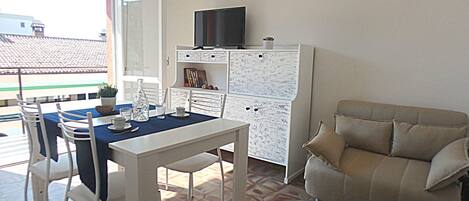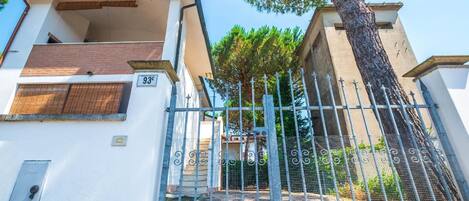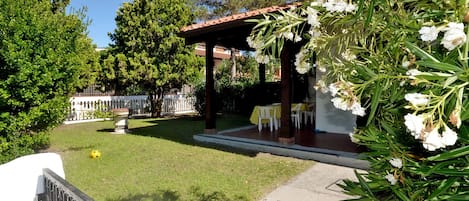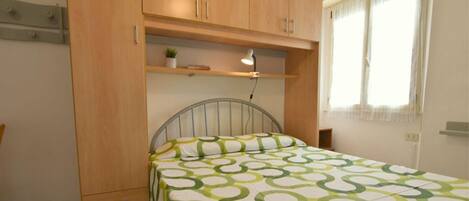Entire home
Villa Sole Very brand new semi-detached villa, with air conditioning and garden
Photo gallery for Villa Sole Very brand new semi-detached villa, with air conditioning and garden
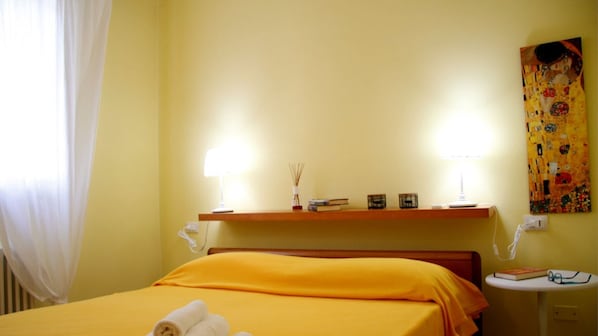

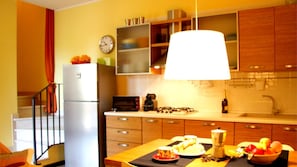
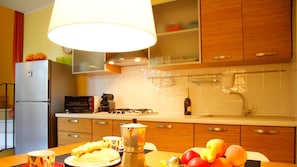
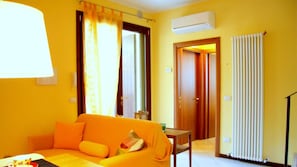
Reviews
8.0 out of 10
Very good
2 bedrooms1 bathroomSleeps 550 sq m
Popular amenities
Explore the area

Comacchio, Ferrara
- Circuito di Pomposa17 min walk
- Po Delta Park7 min drive
- Roman Ship Museum7 min drive
- Ravenna (RAN)49 min drive
Rooms & beds
2 bedrooms (sleeps 5)
Bedroom 1
1 Double Bed and 1 Single Bed
Matrimonial bedroom
1 Double Bed
1 bathroom
Bathroom 1
Toilet · Shower only
Spaces
About this property
Villa Sole Very brand new semi-detached villa, with air conditioning and garden
Semi-detached villa recently built, developed on two floors with air conditiong and garden, in residential context at Lido degli Scacchi.
Comacchio is about 10 km away and is the most original and fascinating historical center in Po Delta Park.
Origin of the ancient Spina, long controversial from Ferrara and Ravenna, by the Popes and Emperors, has ancient origins: it rises in fact at the dawn of the Middle Ages, when the initial settlement settled on a chain of islets emerging in the evergreen mouth of the Padana.
Fishing, shellfish, salt production were the source of its flourishingness and its overturns, due to the conflicts that opposed it to Venice. After the Estense era, during the Pontifical State, the city revived, so much so that the happiest architectural and monumental interventions dates back to the sixth-eighteenth century.
Now Comacchio is a lagoon town that enchants: it is gentle and genuine, with a vitality that is lymph in respect to its own history and the desire to valorize it. A widespread reminder remembers the proximity to the sea, whose light fills the urban spaces, even more potentiated by the quiet areas of the canals.
The town of Comacchio and its valleys represent the "heart" of the Delta, are in fact the green lungs of the whole Adriatic coast from Chioggia to Cattolica. The Comacchio Lagoon are the real museum and represent one of the most important lagoon complexes in Italy and Europe. They extend to the provinces of Ferrara and partly to Ravenna, for more than 11,000 hectares, between Comacchio and the River Reno, and are connected to the sea through the channels of Magnavacca, Logonovo, Bellocchio and Gobbino. Formations of brackish water, they represent an important biotope of brackish water wet zone, made up of extreme alofil vegetation and declared of international interest, according to the Ramsar Convention of 1971.
Around the lagoon the historical and economic history of Comacchio has been centered and developed; this is an almost unique example of integration between the natural environment and human activity, where salt production and fisheries have always represented the primary economic bases, to which local craftsmanship was predominantly linked, being almost agriculture is absent and tourism is completely lacking. These latest economic components have developed almost simultaneously with the reclamation and draining of thousands of acres of lagoon, leaving unchanged that part of which is still practiced especially eel fishing with special instruments named Lavoriero.
The total surface is formed by the lagoon "Fossa di Porto" (including Zavelea oasis), "Lido di Magnavacca", "Fattibello" (which in the past was not far used for fishing as a daily livelihood) and "Campo"; has a morphology articulated because of:
artificial crevices created to delineate the catchment basins of the bush, barene and ancient dunosis emerging from the waters.
Boscoforte Peninsula is a very suggestive sandy tongue, extending from the Reno River between the lagoon "Fossa di Porto" and "Lido di Magnavacca" for a length of 6 km, formed by the expanse of a dune-coastal cordon of the Etruscan period .
Semi-detached villa recently built, developed on two floors with air conditiong and garden, in residential context at Lido degli Scacchi.
Comacchio is about 10 km away and is the most original and fascinating historical center in Po Delta Park.
Origin of the ancient Spina, long controversial from Ferrara and Ravenna, by the Popes and Emperors, has ancient origins: it rises in fact at the dawn of the Middle Ages, when the initial settlement settled on a chain of islets emerging in the evergreen mouth of the Padana.
Fishing, shellfish, salt production were the source of its flourishingness and its overturns, due to the conflicts that opposed it to Venice. After the Estense era, during the Pontifical State, the city revived, so much so that the happiest architectural and monumental interventions dates back to the sixth-eighteenth century.
Now Comacchio is a lagoon town that enchants: it is gentle and genuine, with a vitality that is lymph in respect to its own history and the desire to valorize it. A widespread reminder remembers the proximity to the sea, whose light fills the urban spaces, even more potentiated by the quiet areas of the canals.
The town of Comacchio and its valleys represent the "heart" of the Delta, are in fact the green lungs of the whole Adriatic coast from Chioggia to Cattolica. The Comacchio Lagoon are the real museum and represent one of the most important lagoon complexes in Italy and Europe. They extend to the provinces of Ferrara and partly to Ravenna, for more than 11,000 hectares, between Comacchio and the River Reno, and are connected to the sea through the channels of Magnavacca, Logonovo, Bellocchio and Gobbino. Formations of brackish water, they represent an important biotope of brackish water wet zone, made up of extreme alofil vegetation and declared of international interest, according to the Ramsar Convention of 1971.
Around the lagoon the historical and economic history of Comacchio has been centered and developed; this is an almost unique example of integration between the natural environment and human activity, where salt production and fisheries have always represented the primary economic bases, to which local craftsmanship was predominantly linked, being almost agriculture is absent and tourism is completely lacking. These latest economic components have developed almost simultaneously with the reclamation and draining of thousands of acres of lagoon, leaving unchanged that part of which is still practiced especially eel fishing with special instruments named Lavoriero.
The total surface is formed by the lagoon "Fossa di Porto" (including Zavelea oasis), "Lido di Magnavacca", "Fattibello" (which in the past was not far used for fishing as a daily livelihood) and "Campo"; has a morphology articulated because of:
artificial crevices created to delineate the catchment basins of the bush, barene and ancient dunosis emerging from the waters.
Boscoforte Peninsula is a very suggestive sandy tongue, extending from the Reno River between the lagoon "Fossa di Porto" and "Lido di Magnavacca" for a length of 6 km, formed by the expanse of a dune-coastal cordon of the Etruscan period .
Comacchio is about 10 km away and is the most original and fascinating historical center in Po Delta Park.
Origin of the ancient Spina, long controversial from Ferrara and Ravenna, by the Popes and Emperors, has ancient origins: it rises in fact at the dawn of the Middle Ages, when the initial settlement settled on a chain of islets emerging in the evergreen mouth of the Padana.
Fishing, shellfish, salt production were the source of its flourishingness and its overturns, due to the conflicts that opposed it to Venice. After the Estense era, during the Pontifical State, the city revived, so much so that the happiest architectural and monumental interventions dates back to the sixth-eighteenth century.
Now Comacchio is a lagoon town that enchants: it is gentle and genuine, with a vitality that is lymph in respect to its own history and the desire to valorize it. A widespread reminder remembers the proximity to the sea, whose light fills the urban spaces, even more potentiated by the quiet areas of the canals.
The town of Comacchio and its valleys represent the "heart" of the Delta, are in fact the green lungs of the whole Adriatic coast from Chioggia to Cattolica. The Comacchio Lagoon are the real museum and represent one of the most important lagoon complexes in Italy and Europe. They extend to the provinces of Ferrara and partly to Ravenna, for more than 11,000 hectares, between Comacchio and the River Reno, and are connected to the sea through the channels of Magnavacca, Logonovo, Bellocchio and Gobbino. Formations of brackish water, they represent an important biotope of brackish water wet zone, made up of extreme alofil vegetation and declared of international interest, according to the Ramsar Convention of 1971.
Around the lagoon the historical and economic history of Comacchio has been centered and developed; this is an almost unique example of integration between the natural environment and human activity, where salt production and fisheries have always represented the primary economic bases, to which local craftsmanship was predominantly linked, being almost agriculture is absent and tourism is completely lacking. These latest economic components have developed almost simultaneously with the reclamation and draining of thousands of acres of lagoon, leaving unchanged that part of which is still practiced especially eel fishing with special instruments named Lavoriero.
The total surface is formed by the lagoon "Fossa di Porto" (including Zavelea oasis), "Lido di Magnavacca", "Fattibello" (which in the past was not far used for fishing as a daily livelihood) and "Campo"; has a morphology articulated because of:
artificial crevices created to delineate the catchment basins of the bush, barene and ancient dunosis emerging from the waters.
Boscoforte Peninsula is a very suggestive sandy tongue, extending from the Reno River between the lagoon "Fossa di Porto" and "Lido di Magnavacca" for a length of 6 km, formed by the expanse of a dune-coastal cordon of the Etruscan period .
Semi-detached villa recently built, developed on two floors with air conditiong and garden, in residential context at Lido degli Scacchi.
Comacchio is about 10 km away and is the most original and fascinating historical center in Po Delta Park.
Origin of the ancient Spina, long controversial from Ferrara and Ravenna, by the Popes and Emperors, has ancient origins: it rises in fact at the dawn of the Middle Ages, when the initial settlement settled on a chain of islets emerging in the evergreen mouth of the Padana.
Fishing, shellfish, salt production were the source of its flourishingness and its overturns, due to the conflicts that opposed it to Venice. After the Estense era, during the Pontifical State, the city revived, so much so that the happiest architectural and monumental interventions dates back to the sixth-eighteenth century.
Now Comacchio is a lagoon town that enchants: it is gentle and genuine, with a vitality that is lymph in respect to its own history and the desire to valorize it. A widespread reminder remembers the proximity to the sea, whose light fills the urban spaces, even more potentiated by the quiet areas of the canals.
The town of Comacchio and its valleys represent the "heart" of the Delta, are in fact the green lungs of the whole Adriatic coast from Chioggia to Cattolica. The Comacchio Lagoon are the real museum and represent one of the most important lagoon complexes in Italy and Europe. They extend to the provinces of Ferrara and partly to Ravenna, for more than 11,000 hectares, between Comacchio and the River Reno, and are connected to the sea through the channels of Magnavacca, Logonovo, Bellocchio and Gobbino. Formations of brackish water, they represent an important biotope of brackish water wet zone, made up of extreme alofil vegetation and declared of international interest, according to the Ramsar Convention of 1971.
Around the lagoon the historical and economic history of Comacchio has been centered and developed; this is an almost unique example of integration between the natural environment and human activity, where salt production and fisheries have always represented the primary economic bases, to which local craftsmanship was predominantly linked, being almost agriculture is absent and tourism is completely lacking. These latest economic components have developed almost simultaneously with the reclamation and draining of thousands of acres of lagoon, leaving unchanged that part of which is still practiced especially eel fishing with special instruments named Lavoriero.
The total surface is formed by the lagoon "Fossa di Porto" (including Zavelea oasis), "Lido di Magnavacca", "Fattibello" (which in the past was not far used for fishing as a daily livelihood) and "Campo"; has a morphology articulated because of:
artificial crevices created to delineate the catchment basins of the bush, barene and ancient dunosis emerging from the waters.
Boscoforte Peninsula is a very suggestive sandy tongue, extending from the Reno River between the lagoon "Fossa di Porto" and "Lido di Magnavacca" for a length of 6 km, formed by the expanse of a dune-coastal cordon of the Etruscan period .
Property manager
Roberto Cavalieri
Languages
English, Italian, Portuguese
Add dates for prices
Amenities
Washer
Air conditioning
Parking available
Barbecue grill
Have a question?
BetaGet instant answers with AI powered search of property information and reviews.
Similar properties
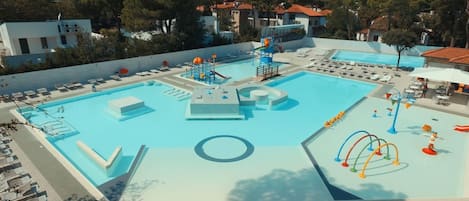
Vacation village Mare Pineta Mimosa for 5 persons
Vacation village Mare Pineta Mimosa for 5 persons
- Pool
- Kitchen
- Pet-friendly
- Free WiFi
House Rules
Check in after 3:00 PM
Check out before 10:00 AM
Children
Children allowed: ages 0–17
Events
No events allowed
Pets
No pets allowed
Smoking
Smoking is not permitted
Important information
You need to know
Extra-person charges may apply and vary depending on property policy
Government-issued photo identification and a credit card, debit card or cash deposit may be required at check-in for incidental charges
Special requests are subject to availability upon check-in and may incur additional charges; special requests cannot be guaranteed
This property accepts cash
On-site parties or group events are strictly prohibited
Host has not indicated whether there is a carbon monoxide detector on the property; consider bringing a portable detector with you on the trip
Host has not indicated whether there is a smoke detector on the property
We should mention
All guests, including children, must be present at check-in and show their government-issued photo ID card or passport
Cash transactions at this property cannot exceed EUR 5000, due to national regulations; for further details, please contact the property using the information in the booking confirmation
About the area
Comacchio
Comacchio is home to this holiday home. Trepponti Bridge and Manifattura dei Marinati are local landmarks, and some of the area's attractions include Circuito di Pomposa and Bosco de la Mesola.

Comacchio, Ferrara
What's nearby
- Circuito di Pomposa - 17 min walk - 1.4 km
- Po Delta Park - 7 min drive - 6.2 km
- Roman Ship Museum - 7 min drive - 6.2 km
- Trepponti Bridge - 7 min drive - 6.2 km
- Sanctuary of Santa Maria in Aula Regia - 9 min drive - 8.3 km
Getting around
Restaurants
- Discoteca J&J - 3 min walk
- Monnalisa Restaurant - 2 min drive
- Bar Tavola Calda Pizzeria Sonia - 4 min drive
- Pizzeria Santa Lucia - 4 min drive
- Disco Bar Corallo - 14 min walk
Frequently asked questions
Reviews
Reviews
No reviews yet
Be the first to leave a review for this property after your stay.
About the host
Hosted by Roberto Cavalieri
Languages:
English, Italian, Portuguese
Tell us how we can improve our siteShare feedback


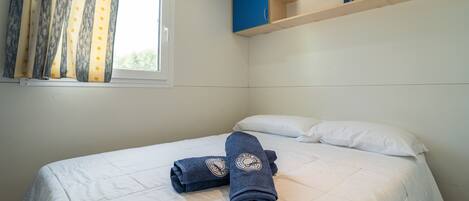

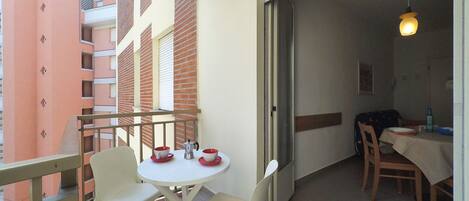
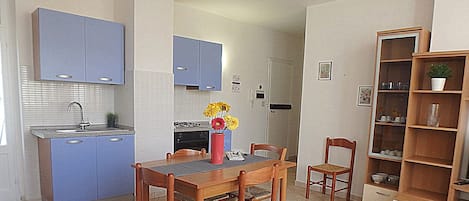

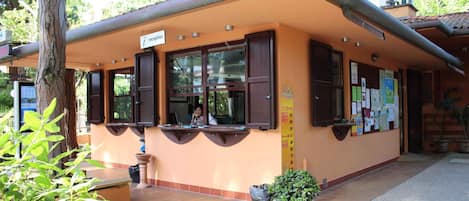
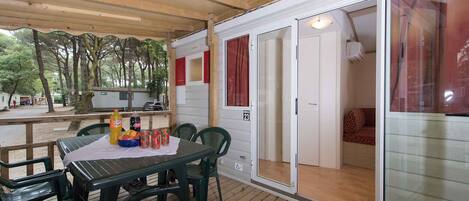
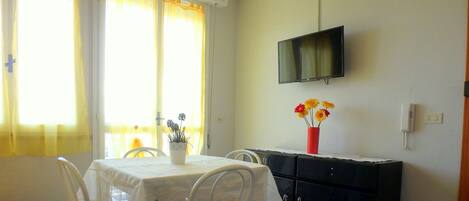
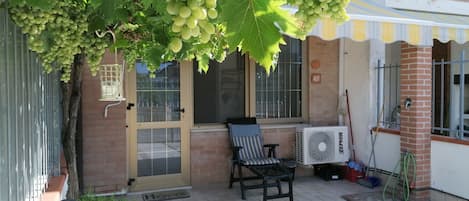

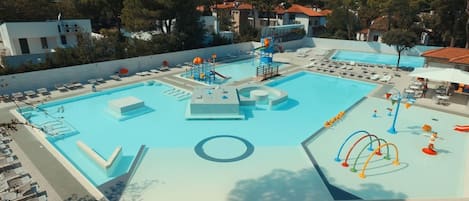

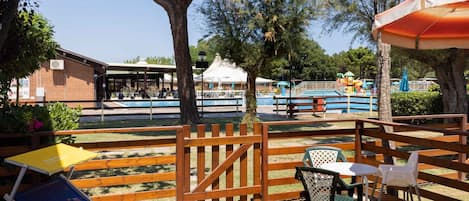

![Holiday Home Exterior [summer]](https://media.vrbo.com/lodging/75000000/74490000/74489800/74489757/a471537b.jpg?impolicy=fcrop&w=469&h=201&p=1&q=medium)
